Rajiv Ratn Shah
On Optimal Steering to Achieve Exact Fairness
Sep 19, 2025Abstract:To fix the 'bias in, bias out' problem in fair machine learning, it is important to steer feature distributions of data or internal representations of Large Language Models (LLMs) to ideal ones that guarantee group-fair outcomes. Previous work on fair generative models and representation steering could greatly benefit from provable fairness guarantees on the model output. We define a distribution as ideal if the minimizer of any cost-sensitive risk on it is guaranteed to have exact group-fair outcomes (e.g., demographic parity, equal opportunity)-in other words, it has no fairness-utility trade-off. We formulate an optimization program for optimal steering by finding the nearest ideal distribution in KL-divergence, and provide efficient algorithms for it when the underlying distributions come from well-known parametric families (e.g., normal, log-normal). Empirically, our optimal steering techniques on both synthetic and real-world datasets improve fairness without diminishing utility (and sometimes even improve utility). We demonstrate affine steering of LLM representations to reduce bias in multi-class classification, e.g., occupation prediction from a short biography in Bios dataset (De-Arteaga et al.). Furthermore, we steer internal representations of LLMs towards desired outputs so that it works equally well across different groups.
Spiritual-LLM : Gita Inspired Mental Health Therapy In the Era of LLMs
Jun 23, 2025Abstract:Traditional mental health support systems often generate responses based solely on the user's current emotion and situations, resulting in superficial interventions that fail to address deeper emotional needs. This study introduces a novel framework by integrating spiritual wisdom from the Bhagavad Gita with advanced large language model GPT-4o to enhance emotional well-being. We present the GITes (Gita Integrated Therapy for Emotional Support) dataset, which enhances the existing ExTES mental health dataset by including 10,729 spiritually guided responses generated by GPT-4o and evaluated by domain experts. We benchmark GITes against 12 state-of-the-art LLMs, including both mental health specific and general purpose models. To evaluate spiritual relevance in generated responses beyond what conventional n-gram based metrics capture, we propose a novel Spiritual Insight metric and automate assessment via an LLM as jury framework using chain-of-thought prompting. Integrating spiritual guidance into AI driven support enhances both NLP and spiritual metrics for the best performing LLM Phi3-Mini 3.2B Instruct, achieving improvements of 122.71% in ROUGE, 126.53% in METEOR, 8.15% in BERT score, 15.92% in Spiritual Insight, 18.61% in Sufficiency and 13.22% in Relevance compared to its zero-shot counterpart. While these results reflect substantial improvements across automated empathy and spirituality metrics, further validation in real world patient populations remains a necessary step. Our findings indicate a strong potential for AI systems enriched with spiritual guidance to enhance user satisfaction and perceived support outcomes. The code and dataset will be publicly available to advance further research in this emerging area.
Med-CoDE: Medical Critique based Disagreement Evaluation Framework
Apr 21, 2025Abstract:The emergence of large language models (LLMs) has significantly influenced numerous fields, including healthcare, by enhancing the capabilities of automated systems to process and generate human-like text. However, despite their advancements, the reliability and accuracy of LLMs in medical contexts remain critical concerns. Current evaluation methods often lack robustness and fail to provide a comprehensive assessment of LLM performance, leading to potential risks in clinical settings. In this work, we propose Med-CoDE, a specifically designed evaluation framework for medical LLMs to address these challenges. The framework leverages a critique-based approach to quantitatively measure the degree of disagreement between model-generated responses and established medical ground truths. This framework captures both accuracy and reliability in medical settings. The proposed evaluation framework aims to fill the existing gap in LLM assessment by offering a systematic method to evaluate the quality and trustworthiness of medical LLMs. Through extensive experiments and case studies, we illustrate the practicality of our framework in providing a comprehensive and reliable evaluation of medical LLMs.
Long-context Non-factoid Question Answering in Indic Languages
Apr 18, 2025
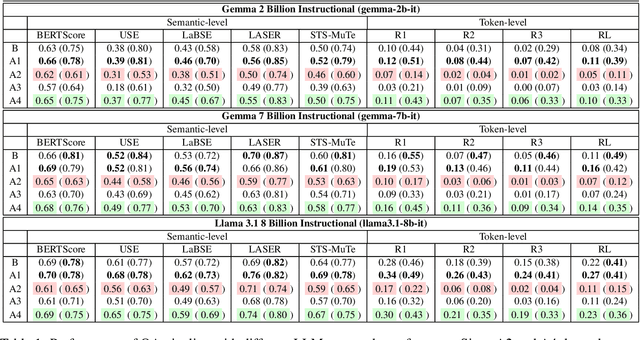
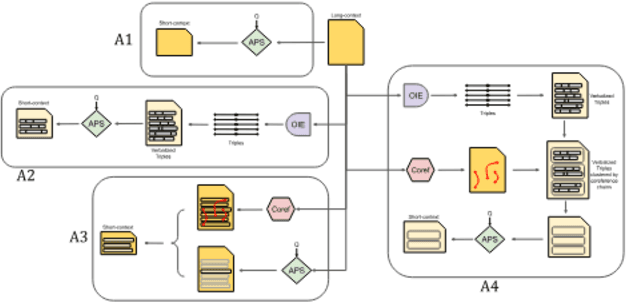
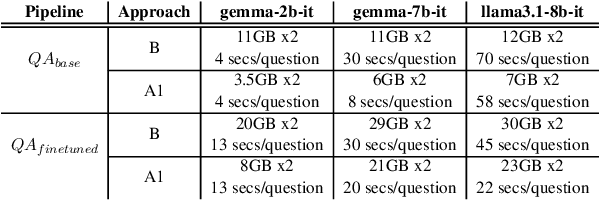
Abstract:Question Answering (QA) tasks, which involve extracting answers from a given context, are relatively straightforward for modern Large Language Models (LLMs) when the context is short. However, long contexts pose challenges due to the quadratic complexity of the self-attention mechanism. This challenge is compounded in Indic languages, which are often low-resource. This study explores context-shortening techniques, including Open Information Extraction (OIE), coreference resolution, Answer Paragraph Selection (APS), and their combinations, to improve QA performance. Compared to the baseline of unshortened (long) contexts, our experiments on four Indic languages (Hindi, Tamil, Telugu, and Urdu) demonstrate that context-shortening techniques yield an average improvement of 4\% in semantic scores and 47\% in token-level scores when evaluated on three popular LLMs without fine-tuning. Furthermore, with fine-tuning, we achieve an average increase of 2\% in both semantic and token-level scores. Additionally, context-shortening reduces computational overhead. Explainability techniques like LIME and SHAP reveal that when the APS model confidently identifies the paragraph containing the answer, nearly all tokens within the selected text receive high relevance scores. However, the study also highlights the limitations of LLM-based QA systems in addressing non-factoid questions, particularly those requiring reasoning or debate. Moreover, verbalizing OIE-generated triples does not enhance system performance. These findings emphasize the potential of context-shortening techniques to improve the efficiency and effectiveness of LLM-based QA systems, especially for low-resource languages. The source code and resources are available at https://github.com/ritwikmishra/IndicGenQA.
Visual and Text Prompt Segmentation: A Novel Multi-Model Framework for Remote Sensing
Mar 10, 2025Abstract:Pixel-level segmentation is essential in remote sensing, where foundational vision models like CLIP and Segment Anything Model(SAM) have demonstrated significant capabilities in zero-shot segmentation tasks. Despite their advances, challenges specific to remote sensing remain substantial. Firstly, The SAM without clear prompt constraints, often generates redundant masks, and making post-processing more complex. Secondly, the CLIP model, mainly designed for global feature alignment in foundational models, often overlooks local objects crucial to remote sensing. This oversight leads to inaccurate recognition or misplaced focus in multi-target remote sensing imagery. Thirdly, both models have not been pre-trained on multi-scale aerial views, increasing the likelihood of detection failures. To tackle these challenges, we introduce the innovative VTPSeg pipeline, utilizing the strengths of Grounding DINO, CLIP, and SAM for enhanced open-vocabulary image segmentation. The Grounding DINO+(GD+) module generates initial candidate bounding boxes, while the CLIP Filter++(CLIP++) module uses a combination of visual and textual prompts to refine and filter out irrelevant object bounding boxes, ensuring that only pertinent objects are considered. Subsequently, these refined bounding boxes serve as specific prompts for the FastSAM model, which executes precise segmentation. Our VTPSeg is validated by experimental and ablation study results on five popular remote sensing image segmentation datasets.
EmoReg: Directional Latent Vector Modeling for Emotional Intensity Regularization in Diffusion-based Voice Conversion
Dec 29, 2024Abstract:The Emotional Voice Conversion (EVC) aims to convert the discrete emotional state from the source emotion to the target for a given speech utterance while preserving linguistic content. In this paper, we propose regularizing emotion intensity in the diffusion-based EVC framework to generate precise speech of the target emotion. Traditional approaches control the intensity of an emotional state in the utterance via emotion class probabilities or intensity labels that often lead to inept style manipulations and degradations in quality. On the contrary, we aim to regulate emotion intensity using self-supervised learning-based feature representations and unsupervised directional latent vector modeling (DVM) in the emotional embedding space within a diffusion-based framework. These emotion embeddings can be modified based on the given target emotion intensity and the corresponding direction vector. Furthermore, the updated embeddings can be fused in the reverse diffusion process to generate the speech with the desired emotion and intensity. In summary, this paper aims to achieve high-quality emotional intensity regularization in the diffusion-based EVC framework, which is the first of its kind work. The effectiveness of the proposed method has been shown across state-of-the-art (SOTA) baselines in terms of subjective and objective evaluations for the English and Hindi languages \footnote{Demo samples are available at the following URL: \url{https://nirmesh-sony.github.io/EmoReg/}}.
Multilingual Mathematical Reasoning: Advancing Open-Source LLMs in Hindi and English
Dec 24, 2024



Abstract:Large Language Models (LLMs) excel in linguistic tasks but struggle with mathematical reasoning, particularly in non English languages like Hindi. This research aims to enhance the mathematical reasoning skills of smaller, resource efficient open-source LLMs in both Hindi and English. We evaluate models like OpenHathi 7B, LLaMA-2 7B, WizardMath 7B, Mistral 7B, LLeMMa 7B, MAmmoTH 7B, Gemini Pro, and GPT-4 using zero-shot, few-shot chain-of-thought (CoT) methods, and supervised fine-tuning. Our approach incorporates curriculum learning, progressively training models on increasingly difficult problems, a novel Decomposition Strategy to simplify complex arithmetic operations, and a Structured Solution Design that divides solutions into phases. Our experiments result in notable performance enhancements. WizardMath 7B exceeds Gemini's accuracy on English datasets by +6% and matches Gemini's performance on Hindi datasets. Adopting a bilingual approach that combines English and Hindi samples achieves results comparable to individual language models, demonstrating the capability to learn mathematical reasoning in both languages. This research highlights the potential for improving mathematical reasoning in open-source LLMs.
Enhancing LLMs for Physics Problem-Solving using Reinforcement Learning with Human-AI Feedback
Dec 06, 2024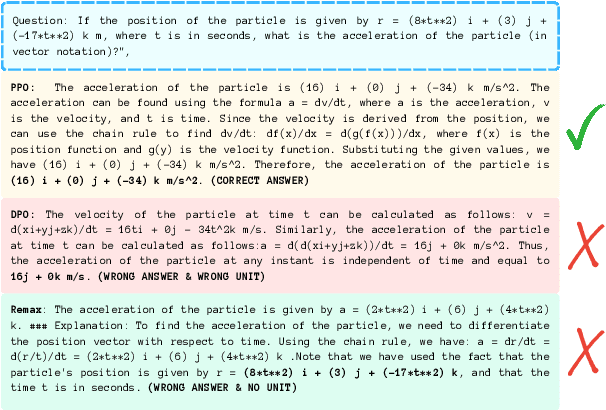
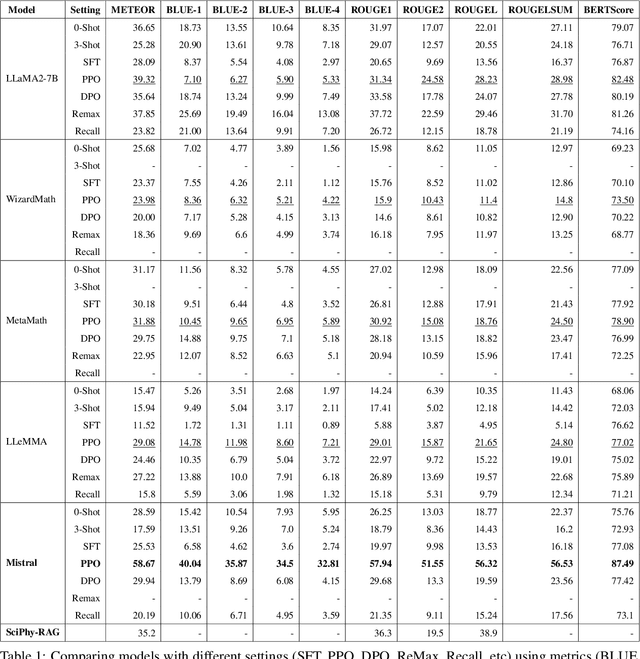
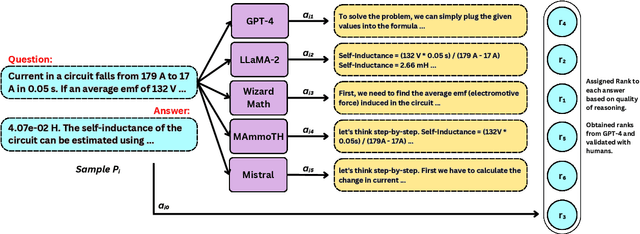
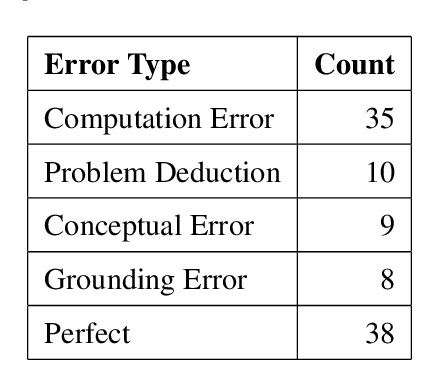
Abstract:Large Language Models (LLMs) have demonstrated strong capabilities in text-based tasks but struggle with the complex reasoning required for physics problems, particularly in advanced arithmetic and conceptual understanding. While some research has explored ways to enhance LLMs in physics education using techniques such as prompt engineering and Retrieval Augmentation Generation (RAG), not enough effort has been made in addressing their limitations in physics reasoning. This paper presents a novel approach to improving LLM performance on physics questions using Reinforcement Learning with Human and Artificial Intelligence Feedback (RLHAIF). We evaluate several reinforcement learning methods, including Proximal Policy Optimization (PPO), Direct Preference Optimization (DPO), and Remax optimization. These methods are chosen to investigate RL policy performance with different settings on the PhyQA dataset, which includes challenging physics problems from high school textbooks. Our RLHAIF model, tested on leading LLMs like LLaMA2 and Mistral, achieved superior results, notably with the MISTRAL-PPO model, demonstrating marked improvements in reasoning and accuracy. It achieved high scores, with a 58.67 METEOR score and a 0.74 Reasoning score, making it a strong example for future physics reasoning research in this area.
Steps are all you need: Rethinking STEM Education with Prompt Engineering
Dec 06, 2024Abstract:Few shot and Chain-of-Thought prompting have shown promise when applied to Physics Question Answering Tasks, but are limited by the lack of mathematical ability inherent to LLMs, and are prone to hallucination. By utilizing a Mixture of Experts (MoE) Model, along with analogical prompting, we are able to show improved model performance when compared to the baseline on standard LLMs. We also survey the limits of these prompting techniques and the effects they have on model performance. Additionally, we propose Analogical CoT prompting, a prompting technique designed to allow smaller, open source models to leverage Analogical prompting, something they have struggled with, possibly due to a lack of specialist training data.
Knowledge Graphs are all you need: Leveraging KGs in Physics Question Answering
Dec 06, 2024



Abstract:This study explores the effectiveness of using knowledge graphs generated by large language models to decompose high school-level physics questions into sub-questions. We introduce a pipeline aimed at enhancing model response quality for Question Answering tasks. By employing LLMs to construct knowledge graphs that capture the internal logic of the questions, these graphs then guide the generation of subquestions. We hypothesize that this method yields sub-questions that are more logically consistent with the original questions compared to traditional decomposition techniques. Our results show that sub-questions derived from knowledge graphs exhibit significantly improved fidelity to the original question's logic. This approach not only enhances the learning experience by providing clearer and more contextually appropriate sub-questions but also highlights the potential of LLMs to transform educational methodologies. The findings indicate a promising direction for applying AI to improve the quality and effectiveness of educational content.
 Add to Chrome
Add to Chrome Add to Firefox
Add to Firefox Add to Edge
Add to Edge